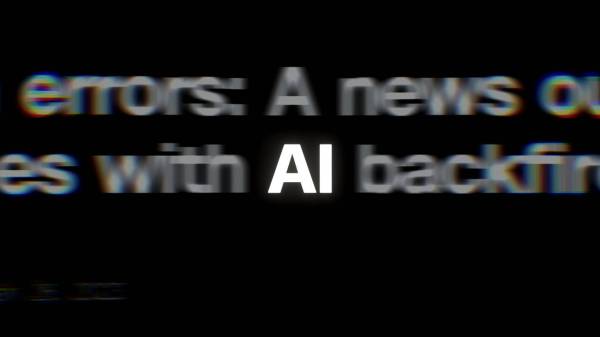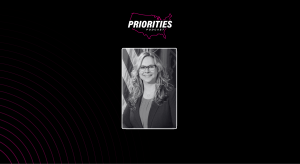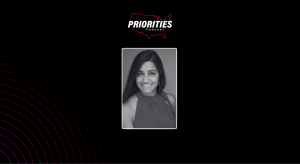Smart and connected: How Chattanooga’s fiber network connects more than just people

Chattanooga, Tennessee, gets a lot of attention for its municipal fiber network because it brings unparalleled connectivity to thousands of residents. But it’s also enabling another type of connectivity.
Dozens of smart city projects are allowing devices to communicate with one another, data points to find new meaning and transportation infrastructure to evolve. Without the baseline support provided by the city’s municipal fiber network, city Chief Information Officer Brent Messer says the city wouldn’t be the technological leader it is today.
From hosting one of the largest open-by-default data portals in the country to the city’s integrated apps and business systems, Chattanooga’s smart city efforts are expansive, and a testament to the essential role internet infrastructure will play in the future of America’s cities.
In an interview with StateScoop, Messer shared many of the Chattanooga’s current smart city projects — a partnership with Oak Ridge National Laboratory, one of the country’s oldest bikeshare systems, an intelligent transportation system with more than 200 connected traffic signals, and connected and self-driving vehicle pilots. And all of it, Messer said, begins with gigabit fiber.
Chattanooga is best known for its gigabit fiber network. Do you think this asset positions your city for success around its smart city efforts?
Oh, absolutely. Since the fiber optic network went live, we’ve seen some pretty dramatic changes. We’re still measuring the results and the sky’s pretty much the limit as to what we can do with this thing.
We’ve seen a lot of tech companies come in. We’ve seen some tech companies that have headquarters in other states put offices here and we’re trying to talk other companies into coming into this area.
We have a pretty robust quarter-mile-radius innovation district and we have plans to change some of that space downtown, the idea being that we get everyone using this fiber optic network. We have full gig Wi-Fi inside this innovation district, which we call NoogaNet, which is free for anyone to use, and we provide collaborative spaces, the idea behind that being that how many times have you seen somebody call a meeting and say, ‘Alright, we’re going to innovate, I want ideas and I want them right now.’ And you get blank stares most of the time, if that’s ever happened. Usually, most ideas and most innovation comes from spur of the moment collaborative collisions in smart spaces like this. We’ve got the network infrastructure, we want to create the innovation district and we want to surround that district with Internet of Things (IoT), apps, paperless processes, e-signatures — things like that — so we can encourage collaboration among different companies and different organizations, even with the city, because we’re going to participate in it, as well.
Smart cities doesn’t necessarily mean infrastructure. It could mean any number of things, like the way we conduct business. But I think it had been a huge advantage and it’s definitely had a tremendous impact. If you we didn’t have [our fiber network], I think the challenges would be definitely in the area of connectivity. I’ve talked to a lot of other cities and one of their biggest challenges is that they want to do some of this interconnectivity, some of this smart traffic and small cell stuff, but they don’t have the fiber infrastructure and to put the fiber infrastructure in is extremely expensive. It’s an obvious advantage for us, and if we didn’t have it, we wouldn’t be where we are now, quite honestly.
Which efforts in the IoT space are furthest along in Chattanooga?
Our Wi-Fi right now is probably the most mature. We’re working right now to solidify small-fill infrastructure. A lot of times, in certain areas, you get behind buildings or areas with lots of people and you have a hard time getting a good signal on your cell service. Small-fill instead of having large, god-awful-looking towers, you have integrated lamp posts, bus stops with digital signage and they have built in cellular and Wi-Fi antennas in them.
The idea is that you complete the coverage throughout parts of cities, especially in our innovation district so that we can not only make it look appealing, because AT&T doesn’t care whether Singular or Verizon has towers, they fight over space and then they hog the space, so we take it upon ourselves to let it be known we’re going to be the mediators for that and we’re going to determine through our legislation where you can and can’t put your antennas and we’re going to make sure you don’t take up all the antenna space and so that we’re not partial to any one particular company.
The other part of it is how that interaction with IoT. When we start thinking about the Internet of Things and devices. I’ll give you an example and this is not something we’re currently working on — it’s just kind of an idea we’re throwing out there. An app that tells not only the bus schedule and the time and the route, but also GPS locates the bus. So you’re looking down and you’re seeing how much time you have. You can check and see how close is the bus to me, how close is the nearest bike rack to me or any of those things for transportation options, but it goes beyond that. Connected devices, how their interactions benefit the city — that’s really what we’re pushing.
What is the driving force behind your IoT efforts?
Because we’re a smart city. We’re an innovative city. We don’t wait for other people to go out and try something first. We dive in head first and we try it out.
The IoT space is not a fad. It’s not something that’s going to go away. Ten years ago, you didn’t have smartphones — you had flip phones and look at how fast that went. Well, the IoT space is kind of the culmination of that. It’s the next step in that phase of devices — clothes that communicate with each other, cars that communicate with each other, watches that communicate with each other, Google Glass, things like that. So we’re interested in trying to bring that innovation to this area for not only economic reasons but for technological reasons so that it boosts our economy, but it also gives us a way to set the trend for that space.
You mentioned a theoretical project earlier — what are some of your actual smart city projects?
We’ve got several different connected apps right now that are out there right now — our 311 system and the police department has one that we’re working with. We’re not working with our police department on what is called a real-time intelligence center, we just launched. And my group put that together for them, so we’ve got cameras pretty much in not only high crime areas, but anywhere we have public events, because we have Iron Man here twice a year, we have River Bend, which is a big festival going on right now. We have the Chattanooga Marathon. We have several things that happen in our downtown riverfront area, so we have cameras all over the place that are monitored and recorded.
It’s a real-time center. We have a full-time group of analysts that are in there matching things together. So in a real-time event, if a crime’s happening, then we can deploy officers and fire and emergency rescue to the exact spot where they’re going.
We’ve got GPS location in most of our vehicles already. We have license plate readers that automatically pull license plates off of cards and detect if the vehicle’s stolen or there’s a warrant, something along those lines.
And then I mentioned those apps. Our future plan here in the next several years is to culminate all those systems into a single system. That’s probably the biggest challenge for any municipality. If you’re in manufacturing, you probably only have to worry about one or two things — the raw materials and the output of your product and everything in between there. But in government and especially in local government, we’re law enforcement, we’re emergency services, we’re 911, we are libraries, we are schools, we are public works, we are manufacturing, we are also service models, from a technology perspective, so we have to run the gamut of all these different verticals and the idea of having all these different disparate systems and data disconnected is just kind of bothersome. So that’s our next biggest challenge, especially in this connected space inside of our innovation district. We have to be able to culminate those things into a single My Chattanooga app and have that experience not only with the web, but mobile and with the proprietary apps as well.
Is fragmentation a real challenge in this space?
Yeah, because there’s no standards yet. My estimation is that within the next five to 10 years, probably closer to the 10-year time space, you’ll start to see more standards coming out and more normalization. And then, who knows? That may get displaced, as well.
Our goal as a community is to really push the boundaries of how we conduct business with citizens and businesses in the area. It’s an economic driver.
This story was featured in StateScoop Special Report: Smart Communities (2017)






